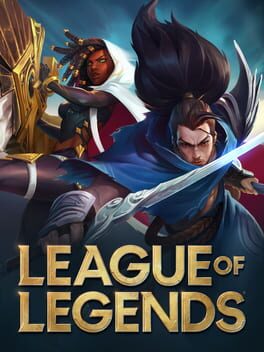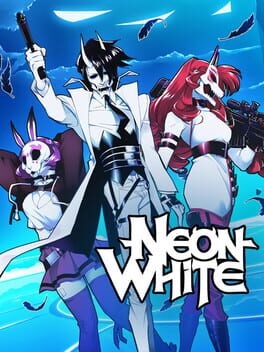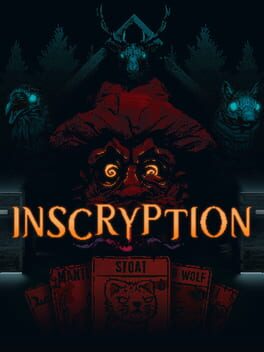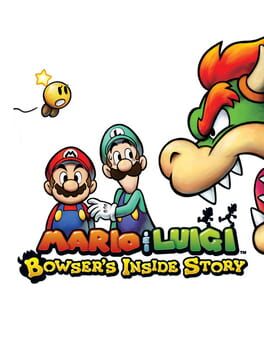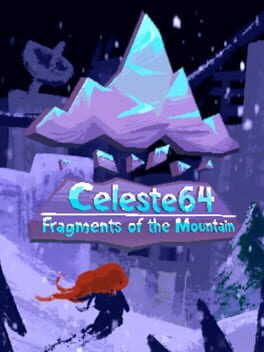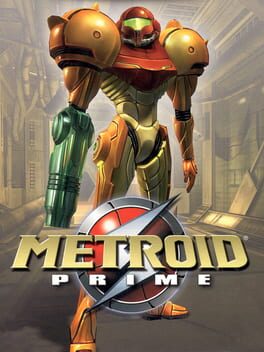maximilyun
2009
1996
It's remarkable that a game as old as Super Mario 64 remains at the pinnacle of '3D movement' in the game design pantheon. This was Nintendo's first attempt at making 3D movement and it is so very expressive. It's just a shame not much else here sticks out to me as all that fun or impressive.
The recency of 3D movement meant that not many challenges could be constructed around pure-platforming. Most great parts of 64 I look back on were the Bowser Assault Courses and the odd fantastic mission. The movement is the star of the show, but the show doesn't seem to have many (mechanically) interesting set-pieces.
I live for everything about this game's aesthetic though. Definitely a must play even with the problems I have with it.
The recency of 3D movement meant that not many challenges could be constructed around pure-platforming. Most great parts of 64 I look back on were the Bowser Assault Courses and the odd fantastic mission. The movement is the star of the show, but the show doesn't seem to have many (mechanically) interesting set-pieces.
I live for everything about this game's aesthetic though. Definitely a must play even with the problems I have with it.
2002
An expansion on Super Mario 64 with some higher highs and some cavernous lows. The adherence to the tropical setting is impressive, especially what with how each setting manages to feel unique while maintaining that vibe.
The linearity of Sunshine never lends itself to anything. Challenges aren't meaningfully iterated on, and I feel the game could benefit with a more open mission structure like 64.
The ending sequence failed to wrap things up meaningfully, and I was left just a bit unsatisfied with it all.
The linearity of Sunshine never lends itself to anything. Challenges aren't meaningfully iterated on, and I feel the game could benefit with a more open mission structure like 64.
The ending sequence failed to wrap things up meaningfully, and I was left just a bit unsatisfied with it all.
2022
1994
It's a fun enough romp with a decent metagame. Coins add a surprising incentive to play levels just a little bit differently. There are even some creatively presented themes here like that one spider level in world 3.
Unfortunately it doesn't distinguish itself enough from the other "New Super" games. The focus on coins isn't the most well thought out when a lot of the levels are autoscrollers, ghost houses, and underwater.
Better than Wii, but not by much. I just want one more 2D Mario that reaches the same aesthetic quality as Super Mario World all that time ago, and after finally beating the last game I had to get to in this series, I'm close to giving up hope.
Unfortunately it doesn't distinguish itself enough from the other "New Super" games. The focus on coins isn't the most well thought out when a lot of the levels are autoscrollers, ghost houses, and underwater.
Better than Wii, but not by much. I just want one more 2D Mario that reaches the same aesthetic quality as Super Mario World all that time ago, and after finally beating the last game I had to get to in this series, I'm close to giving up hope.
2015
2021
2011
2019
I missed my subway stop going downtown because I was in such a trance. I wasn’t staring at my phone - I was thinking of Persona 5!
Specifically, I was thinking of the moments in the game where you’ve just spent a few hours going through the remainder of an oppressive dungeon (oppressive in an audiovisual sense) and finding a route to the end, you arrive back at Café Leblanc, the song ‘Beneath The Mask’ plays in the background, and Sojiro remarks that you’ve arrived home.
This moment is perhaps my favourite moment of the many moments in Persona 5 that make me grateful for video games as an art form. It’s this kind of experience I think can’t be conveyed in other art forms with quite the same level of potency as a video game.
It’s a moment that reminds me of taking the subway to its terminal stop and waiting for a ride to pick my friends and I up, listening to jazz in an empty outdoor apartment exterior after almost missing the last ferry back to mainland in downtown Toronto.
It’s a moment that reminds me of simply seeing a friend for the first time in a while during a busy semester.
It’s a moment that, for the last 3 years since I first played Persona 5, that has instilled a sort of nostalgia for the simple act of “coming home.”
It’s a moment that makes the rest of Persona 5’s flaws worth it, and makes all of its strengths that much stronger.
The rest of it is irrelevant, this one moment, singlehandedly solidified Persona 5 (Royal) as one of my favourite games of all time, and a piece of art worth remembering.
Specifically, I was thinking of the moments in the game where you’ve just spent a few hours going through the remainder of an oppressive dungeon (oppressive in an audiovisual sense) and finding a route to the end, you arrive back at Café Leblanc, the song ‘Beneath The Mask’ plays in the background, and Sojiro remarks that you’ve arrived home.
This moment is perhaps my favourite moment of the many moments in Persona 5 that make me grateful for video games as an art form. It’s this kind of experience I think can’t be conveyed in other art forms with quite the same level of potency as a video game.
It’s a moment that reminds me of taking the subway to its terminal stop and waiting for a ride to pick my friends and I up, listening to jazz in an empty outdoor apartment exterior after almost missing the last ferry back to mainland in downtown Toronto.
It’s a moment that reminds me of simply seeing a friend for the first time in a while during a busy semester.
It’s a moment that, for the last 3 years since I first played Persona 5, that has instilled a sort of nostalgia for the simple act of “coming home.”
It’s a moment that makes the rest of Persona 5’s flaws worth it, and makes all of its strengths that much stronger.
The rest of it is irrelevant, this one moment, singlehandedly solidified Persona 5 (Royal) as one of my favourite games of all time, and a piece of art worth remembering.
2023
The most underwhelming Mario RPG I've played.
Outside of the main cast, I can count on no hands how many characters I found charming. I'd rather not talk about Booster, and I think the closest thing to a side character I did feel compelled by was Dodo.
And even when I was compelled, I felt like things didn't go anywhere. I feel like the recurrence of certain characters, like Croco appearing a stoic while selling you items in the final act of the game, is supposed to make me feel much more strongly than it actually does. Valentina just leaves the premises after you defeat her with zero fanfare. And while I like the pacing of this game, I don't think adding a few elements to flesh out the various story arcs in this game would have hurt. Bosses fall limply and lifelessly over when you defeat them, the combat is easy & monotonous, and I'm just left feeling this dissonance between how whimsical the game looks at a standstill, and how utterly lifeless it is in motion.
(I audibly laughed when Speardovich's battle took place in a completely different location at a completely different time from what was showing in the overworld)
Super Mario RPG is FAR from all bad, the remastered soundtrack is fantastic; the visuals look nice; the main cast is a fun bunch; while the game is easy, and monotonous as hell, the pacing rarely suffers at any point; and there's certainly charm here - but these moments of awe and enjoyment can often feel few and far between!
Even the visuals, which look nice, have a very lifeless look, and at times I yearn to have experienced a remake that took a better job translating the essence of the original, one that took a few more risks, and was maybe less faithful / exact.
I can say I had fun! I enjoyed some character moments. And since the Mario RPG I played before this was Mario & Luigi: Paper Jam, I can definitely appreciate the more subtle writing in this game (save for how rushed certain moments can feel).
I love you Mallow <3
Outside of the main cast, I can count on no hands how many characters I found charming. I'd rather not talk about Booster, and I think the closest thing to a side character I did feel compelled by was Dodo.
And even when I was compelled, I felt like things didn't go anywhere. I feel like the recurrence of certain characters, like Croco appearing a stoic while selling you items in the final act of the game, is supposed to make me feel much more strongly than it actually does. Valentina just leaves the premises after you defeat her with zero fanfare. And while I like the pacing of this game, I don't think adding a few elements to flesh out the various story arcs in this game would have hurt. Bosses fall limply and lifelessly over when you defeat them, the combat is easy & monotonous, and I'm just left feeling this dissonance between how whimsical the game looks at a standstill, and how utterly lifeless it is in motion.
(I audibly laughed when Speardovich's battle took place in a completely different location at a completely different time from what was showing in the overworld)
Super Mario RPG is FAR from all bad, the remastered soundtrack is fantastic; the visuals look nice; the main cast is a fun bunch; while the game is easy, and monotonous as hell, the pacing rarely suffers at any point; and there's certainly charm here - but these moments of awe and enjoyment can often feel few and far between!
Even the visuals, which look nice, have a very lifeless look, and at times I yearn to have experienced a remake that took a better job translating the essence of the original, one that took a few more risks, and was maybe less faithful / exact.
I can say I had fun! I enjoyed some character moments. And since the Mario RPG I played before this was Mario & Luigi: Paper Jam, I can definitely appreciate the more subtle writing in this game (save for how rushed certain moments can feel).
I love you Mallow <3
I’ve built this game up to be a monolith in the 4 years I’ve had it borrowed, and the 4 years it’s been rotting on my backlog. I finally beat it, and what a ride it was!
In all systems, Bowser’s Inside Story boasts a happy medium between the other two games I’ve played in the Mario & Luigi series - not too monotonous (Superstar Saga), not too convoluted (Paper Jam).
Exploration in the overworld is a little lacking for both parties. I wasn’t compelled to explore too much as Bowser, mostly compelled by the combat. As the brothers, you spend most of your time in the overworld exploring places you’ve already seen as Bowser. That’s not to say there aren’t good elements here though, some areas for the brothers are fun, like the optional content in Plack Beach and the depths of Dimble Woods. This game’s journey is at its best when real progression and environmental change is felt. I disliked having a useful fast travel system gated by having it hidden in one of a hundred breakable stage elements; I liked the unique ways for Bowser to change his environment - sneezing to blow the sails of ships by playing a minigame as the brothers, et cetera.
Combat serves all other elements of this game. It compels me to explore, find upgrades for my party, and endears me more to our protagonists and their story. Bowser is a lumbering beast who is at times a bit bratty and childish, but also quite dominative and intimidating. He’s one character, but is controlled with two buttons ala Mario and Luigi - not sacrificing complexity between both styles of combat, and painting Bowser as a more complex being himself through gameplay. His special attacks also show this, using touch-controls to make a less acrobatic Bowser still have a variety of cool, character-relevant moves to unleash on his enemies.
Enemies highlight the differences between both parties quite well. For example, the Crawfuls who need jumps and hammers to evade are easily countered by a punch from Bowser - his vacuum ability especially highlights the sheer difference in power between him and the brothers - for its use in this encounter, and many more. There are few enemies, but none of them are as simple as they let on, and are shown a lot of care through their charming animations.
Mario and Luigi boast their most interesting swathe of special attacks yet - they don’t ask too much of you, but manage to be a fun, increasingly-difficult test of a lot of things you’ve come to expect from the series - memorization, timing, button-presses, positioning, sometimes all at once. I can hardly choose a favourite because so many of them are fantastic - I really loved the ‘Jump Helmet,’ ‘You Hoo Cannon,’ ‘Spin Pipe,’ and ‘Magic Window.’ Interplay between Bowser and bros in battle is a little underwhelming, especially with how few Bowser boss-fights are co-requisite with the bros. A few more enemies acting this way, and one or two more bosses like this would have gone a long way - but overall, every encounter is really fun - as brief and as difficult as necessary. This aspect of the game is (deservedly) the most polished.
The first part of Bowser’s Inside Story focuses on Bowser’s struggles and ambitions, which later culminate in Mario and Luigi unceremoniously escaping his body. Then the game shifts to a search for three “Star Cures,” each found in a mix of settings. Finally, the game shifts to the final act with no fanfare. This is a problem, but it thankfully didn’t bother me too much when I enjoyed the journey through these acts a lot. Specifically, I love Bowser. He is depicted in such a sympathetic way, I felt his triumph and I felt his rage, I loved seeing where he’d go next and what he’d have to say about it. The kaiju-battles are particularly great at making me invested in his character - there’s a fantastic scale, weight, and motivation to them.
It’s hard to not get attached to the narrative this game weaves together. While this narrative is very meandering, it’s also a tightly paced game because of that, rarely suffering from fatigue because of its breadth of varied content. The two types of main combat + the kaiju-battles, the minigames, and the two explorable worlds, all influence each other in some way, and paired with such charming protagonists (and a great antagonist!) make for an incredibly enjoyable time from beginning to end. And it ends on a very high note, the final act is the my favourite in the game, and synthesizes all of the aforementioned content better than at any other point.
Where Bowser wanted to go, I wanted to go, who he wanted to fight, I wanted to fight, and ultimately, he stands tall as the main reason I have fallen in love with this game, through its many flaws, and its even greater amount of triumphs, having finally played it.
In all systems, Bowser’s Inside Story boasts a happy medium between the other two games I’ve played in the Mario & Luigi series - not too monotonous (Superstar Saga), not too convoluted (Paper Jam).
Exploration in the overworld is a little lacking for both parties. I wasn’t compelled to explore too much as Bowser, mostly compelled by the combat. As the brothers, you spend most of your time in the overworld exploring places you’ve already seen as Bowser. That’s not to say there aren’t good elements here though, some areas for the brothers are fun, like the optional content in Plack Beach and the depths of Dimble Woods. This game’s journey is at its best when real progression and environmental change is felt. I disliked having a useful fast travel system gated by having it hidden in one of a hundred breakable stage elements; I liked the unique ways for Bowser to change his environment - sneezing to blow the sails of ships by playing a minigame as the brothers, et cetera.
Combat serves all other elements of this game. It compels me to explore, find upgrades for my party, and endears me more to our protagonists and their story. Bowser is a lumbering beast who is at times a bit bratty and childish, but also quite dominative and intimidating. He’s one character, but is controlled with two buttons ala Mario and Luigi - not sacrificing complexity between both styles of combat, and painting Bowser as a more complex being himself through gameplay. His special attacks also show this, using touch-controls to make a less acrobatic Bowser still have a variety of cool, character-relevant moves to unleash on his enemies.
Enemies highlight the differences between both parties quite well. For example, the Crawfuls who need jumps and hammers to evade are easily countered by a punch from Bowser - his vacuum ability especially highlights the sheer difference in power between him and the brothers - for its use in this encounter, and many more. There are few enemies, but none of them are as simple as they let on, and are shown a lot of care through their charming animations.
Mario and Luigi boast their most interesting swathe of special attacks yet - they don’t ask too much of you, but manage to be a fun, increasingly-difficult test of a lot of things you’ve come to expect from the series - memorization, timing, button-presses, positioning, sometimes all at once. I can hardly choose a favourite because so many of them are fantastic - I really loved the ‘Jump Helmet,’ ‘You Hoo Cannon,’ ‘Spin Pipe,’ and ‘Magic Window.’ Interplay between Bowser and bros in battle is a little underwhelming, especially with how few Bowser boss-fights are co-requisite with the bros. A few more enemies acting this way, and one or two more bosses like this would have gone a long way - but overall, every encounter is really fun - as brief and as difficult as necessary. This aspect of the game is (deservedly) the most polished.
The first part of Bowser’s Inside Story focuses on Bowser’s struggles and ambitions, which later culminate in Mario and Luigi unceremoniously escaping his body. Then the game shifts to a search for three “Star Cures,” each found in a mix of settings. Finally, the game shifts to the final act with no fanfare. This is a problem, but it thankfully didn’t bother me too much when I enjoyed the journey through these acts a lot. Specifically, I love Bowser. He is depicted in such a sympathetic way, I felt his triumph and I felt his rage, I loved seeing where he’d go next and what he’d have to say about it. The kaiju-battles are particularly great at making me invested in his character - there’s a fantastic scale, weight, and motivation to them.
It’s hard to not get attached to the narrative this game weaves together. While this narrative is very meandering, it’s also a tightly paced game because of that, rarely suffering from fatigue because of its breadth of varied content. The two types of main combat + the kaiju-battles, the minigames, and the two explorable worlds, all influence each other in some way, and paired with such charming protagonists (and a great antagonist!) make for an incredibly enjoyable time from beginning to end. And it ends on a very high note, the final act is the my favourite in the game, and synthesizes all of the aforementioned content better than at any other point.
Where Bowser wanted to go, I wanted to go, who he wanted to fight, I wanted to fight, and ultimately, he stands tall as the main reason I have fallen in love with this game, through its many flaws, and its even greater amount of triumphs, having finally played it.
A short and sweet 3D platformer with DNA you can trace back to the more open-ended 3D Mario games. It's a fun return to the themes and mechanics of Celeste but in 3D. At only a little more than an hour long to 100% it, it manages to ground itself in the world of Celeste and explore most of its mechanics with finesse in that short time. I particularly liked how B-Sides from the original Celeste were integrated in this game (they’re like the FLUDD-less levels from Super Mario Sunshine!). Just about the only issue I had with the game is that the camera and depth-perception could've been a little more fine-tuned, but bleehhh they made it in a week and it works perfectly fine. It's free on itch dot io, and a no-brainer download for fans of Celeste. A very nice treat to start the new year!
2002
This review contains spoilers
When playing Metroid Prime, I found myself not only curious about its world and mechanics, but I found myself curious about our world. It's the kind of game that inspires me to learn more. There are some intense moments and some cinematic moments, but some of the best moments in the story exist in the fallout of that tension - clearing out a room of Space Pirates and spending time in silence reading their research logs, understanding more and more about them. On the complete opposite side of this example, loved returning to to the Chozo Ruins, being able to explore more of its catacombs and finding more writings the Chozo civilisation left behind in their struggle. How the story is being told, is just as important as the story being told.
The scan visor is a smart way to get you to learn about the world. Through it, you learn more about the creatures you’ll face in battle, swapping beams and visors to get a better hold of many combat encounters. You learn about how you can destroy and traverse the world, and you can read scripts left behind by the two dominating races on the planet of Tallon IV. The combat isn’t particularly deep, but the visors and beams give each encounter a unique quirk. When using the wave beam against the final boss, I found myself acting more acrobatically to weave around its attacks, due to the wave beam’s homing properties. In other encounters, the wave beam made me act more aggressively, because it stuns smaller enemies. The other three beams have this same kind of situational variety. At the bare minimum, for the more superfluous applications of each beam and each visor, they add that kind of frenzied panic to the combat which I appreciated a lot in Super Metroid. The scan visor often contextualizes how you’ll be using each beam/visor. Sometimes you’ll reason out to use certain beams against certain enemies, like the plasma beam against ice enemies. Other times, the scan visor will aid you in understanding what beams, visors, and by extension, strategies, to use.
Mechanically, the world is a pretty good translation of the 2D Metroid formula. Get an upgrade, find the path the game’s unseen hand is guiding you towards, repeat - with a few optional upgrades and artifacts to find for observant or replaying players. The last half of the game challenged me into thinking critically - I found it very fun to plan my route on the fly to maximize the amount of upgrades and artifacts I could find in the shortest amount of time possible. I think because of the third dimension, Prime can’t get away with as many well kept secrets as its 2D siblings, without them being impossible to find. Thankfully, I find that there are a lot more puzzles and activities that test your spatial awareness - even then, they can be a little simplistic and boring. In a game with a literal added dimension to it, the hint system is a welcome addition, and an even more welcome addition is being able to disable it. The physical world isn’t the most interesting visually or mechanically, but it has some fantastic setpieces, and uses Samus’ available movement well. Samus’ main visor, the one you’ll have equipped for most of the game, has a lot of impressive details to it, further grounding the user interface and “video-game-y” mechanics into the world’s canon, which I appreciate.
Metroid Prime, for me, more than anything, is about the environment and knowledge, and life. Every facet of it feels deliberate, and in service of its greater experience. The Space Pirates are insistent on their believed place in the hierarchy of the cosmos, taking all that they can from the Metroid Prime, augmenting themselves beyond health and sentience. Then, the Metroid Prime, subtextually, represents not a poison, but knowledge itself. Knowledge the Chozo knew to keep at bay, and knowledge the Space Pirates believed they could harness. Samus then, is a kind of succession, who drives away the last sentient beings from Tallon IV, and kills the memory of the knowledge they tried to control, like an empty earth burying the last remaining memory of a nuclear war that wiped out humanity - nuclear energy and waste, comparisons I think are inevitable to Phazon.
There’s a lot more to think about when it comes to Metroid Prime’s story. I think its told organically and does a wonderful job of building tension in the game’s narrative. I think it’s very thought provoking.
I think everything about it is great! The gameplay is not slacking by any means but the story truly elevates it. What I see as its overarching theme, it succeeds at conveying - delivering one of the most focused and immersive games I have had the pleasure to learn more about.
The scan visor is a smart way to get you to learn about the world. Through it, you learn more about the creatures you’ll face in battle, swapping beams and visors to get a better hold of many combat encounters. You learn about how you can destroy and traverse the world, and you can read scripts left behind by the two dominating races on the planet of Tallon IV. The combat isn’t particularly deep, but the visors and beams give each encounter a unique quirk. When using the wave beam against the final boss, I found myself acting more acrobatically to weave around its attacks, due to the wave beam’s homing properties. In other encounters, the wave beam made me act more aggressively, because it stuns smaller enemies. The other three beams have this same kind of situational variety. At the bare minimum, for the more superfluous applications of each beam and each visor, they add that kind of frenzied panic to the combat which I appreciated a lot in Super Metroid. The scan visor often contextualizes how you’ll be using each beam/visor. Sometimes you’ll reason out to use certain beams against certain enemies, like the plasma beam against ice enemies. Other times, the scan visor will aid you in understanding what beams, visors, and by extension, strategies, to use.
Mechanically, the world is a pretty good translation of the 2D Metroid formula. Get an upgrade, find the path the game’s unseen hand is guiding you towards, repeat - with a few optional upgrades and artifacts to find for observant or replaying players. The last half of the game challenged me into thinking critically - I found it very fun to plan my route on the fly to maximize the amount of upgrades and artifacts I could find in the shortest amount of time possible. I think because of the third dimension, Prime can’t get away with as many well kept secrets as its 2D siblings, without them being impossible to find. Thankfully, I find that there are a lot more puzzles and activities that test your spatial awareness - even then, they can be a little simplistic and boring. In a game with a literal added dimension to it, the hint system is a welcome addition, and an even more welcome addition is being able to disable it. The physical world isn’t the most interesting visually or mechanically, but it has some fantastic setpieces, and uses Samus’ available movement well. Samus’ main visor, the one you’ll have equipped for most of the game, has a lot of impressive details to it, further grounding the user interface and “video-game-y” mechanics into the world’s canon, which I appreciate.
Metroid Prime, for me, more than anything, is about the environment and knowledge, and life. Every facet of it feels deliberate, and in service of its greater experience. The Space Pirates are insistent on their believed place in the hierarchy of the cosmos, taking all that they can from the Metroid Prime, augmenting themselves beyond health and sentience. Then, the Metroid Prime, subtextually, represents not a poison, but knowledge itself. Knowledge the Chozo knew to keep at bay, and knowledge the Space Pirates believed they could harness. Samus then, is a kind of succession, who drives away the last sentient beings from Tallon IV, and kills the memory of the knowledge they tried to control, like an empty earth burying the last remaining memory of a nuclear war that wiped out humanity - nuclear energy and waste, comparisons I think are inevitable to Phazon.
There’s a lot more to think about when it comes to Metroid Prime’s story. I think its told organically and does a wonderful job of building tension in the game’s narrative. I think it’s very thought provoking.
I think everything about it is great! The gameplay is not slacking by any means but the story truly elevates it. What I see as its overarching theme, it succeeds at conveying - delivering one of the most focused and immersive games I have had the pleasure to learn more about.
